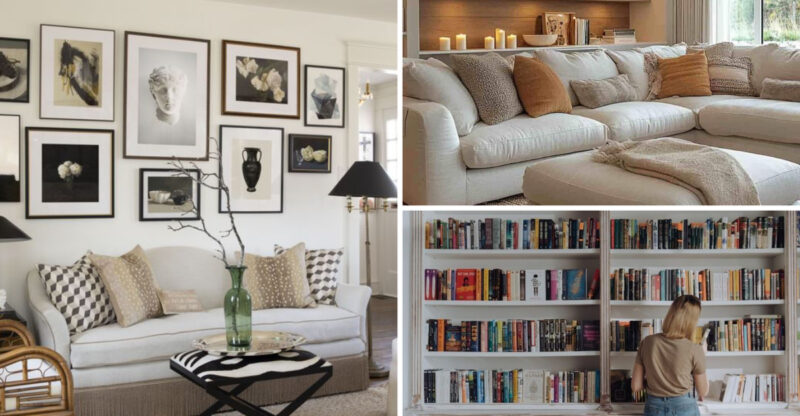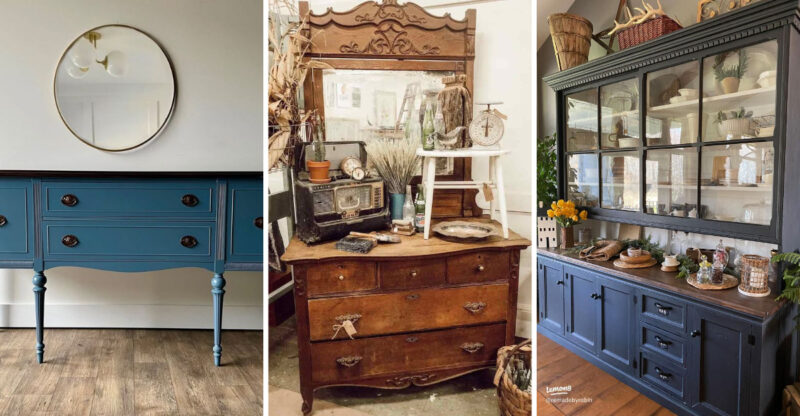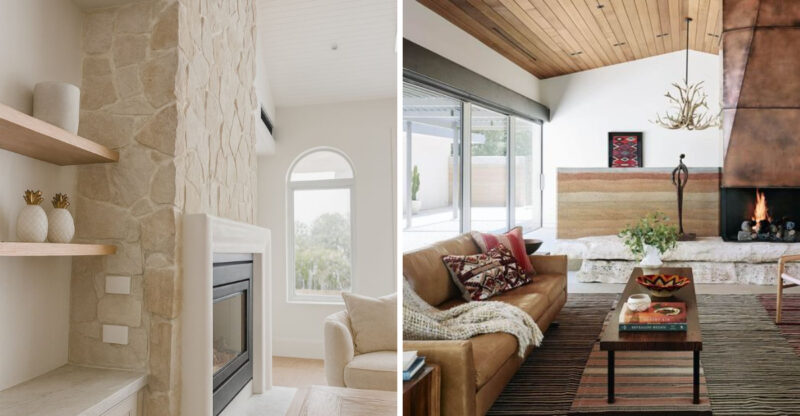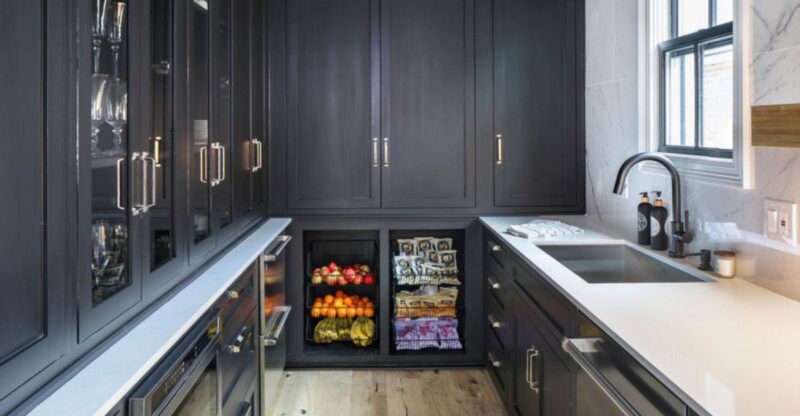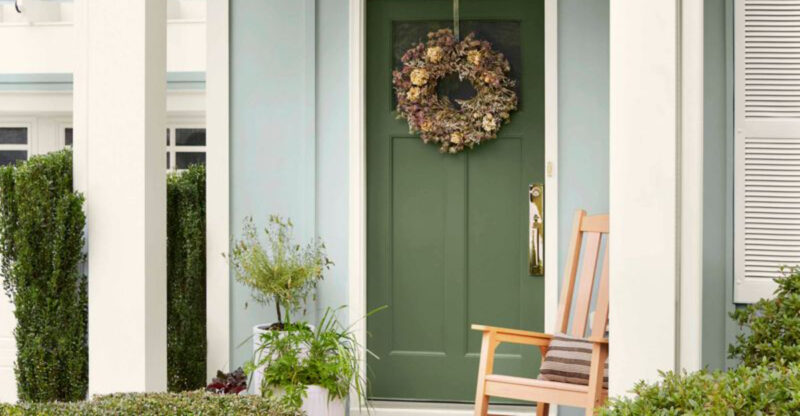18 Most Useful Decorating Tips We’ve Ever Shared
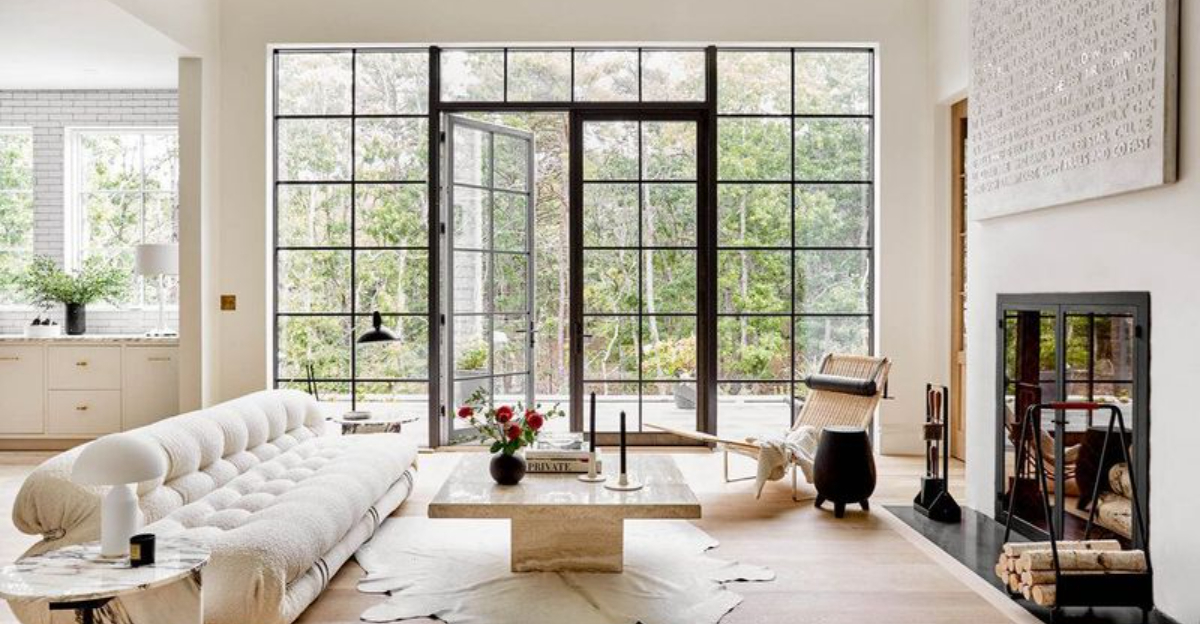
Home decorating can transform any space from dull to delightful, but knowing where to start isn’t always easy.
I’ve gathered my absolute favorite decorating tips that have helped countless readers turn their houses into homes they love.
These practical suggestions work for any budget and style preference, making beautiful spaces more achievable than you might think.
1. Measure Before Buying Furniture
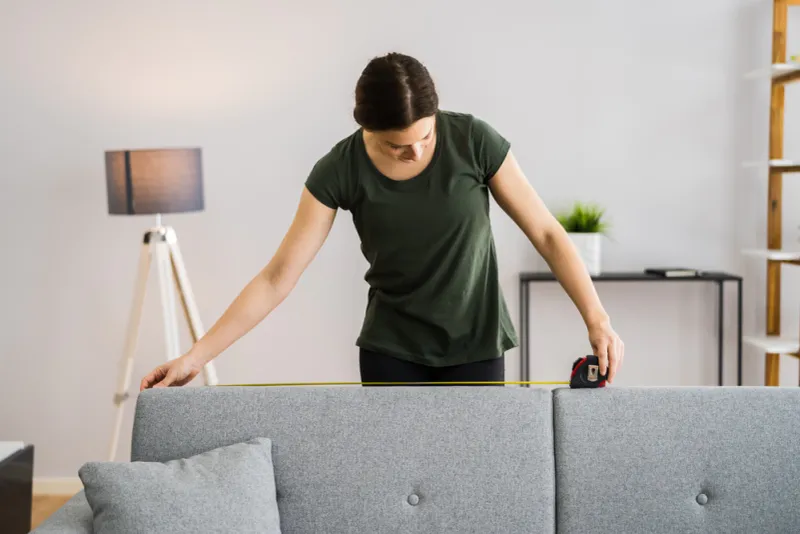
Nothing ruins a decorating plan faster than furniture that doesn’t fit! I always grab my measuring tape before shopping for new pieces. Sketch your room’s dimensions on paper, noting doorways, windows, and other obstacles.
Mark the measurements of potential furniture pieces with painter’s tape on your floor. This visual trick helps you see how much walking space remains. Many stores accept returns, but large furniture often comes with restocking fees that can cost hundreds.
Take photos of your space when shopping to remember what you’re working with. Your future self will thank you for avoiding the heartbreak of a sofa that blocks your doorway or a bed that leaves no room for your dresser.
2. Hang Curtains High and Wide
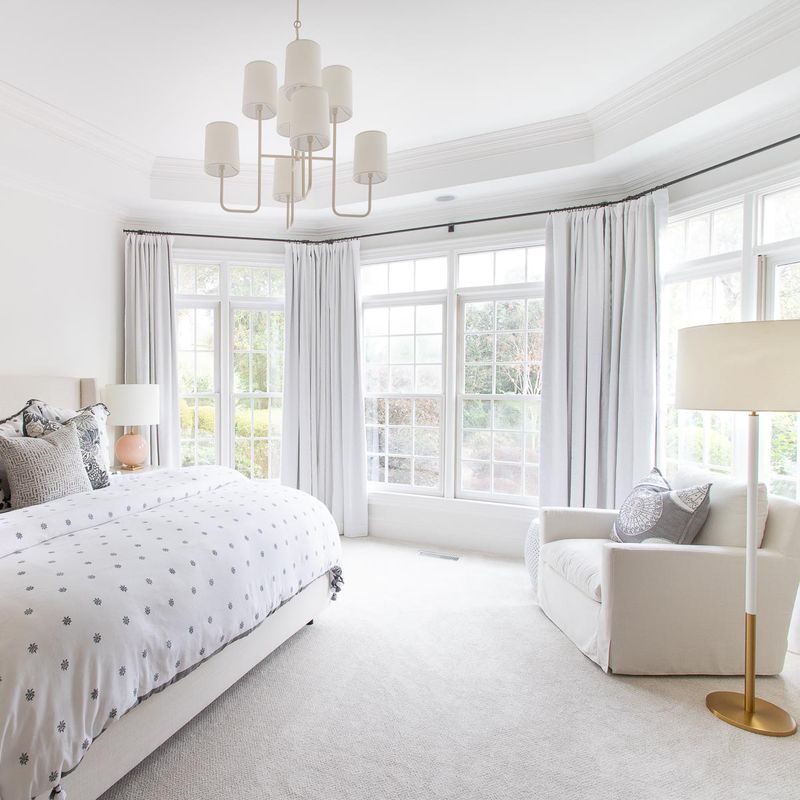
Windows appear dramatically larger when curtains are hung correctly. Instead of mounting curtain rods directly above the window frame, place them 4-6 inches below the ceiling or crown molding. This simple trick instantly makes ceilings feel higher and rooms more spacious.
Extend your curtain rod 8-12 inches beyond each side of the window frame. When open, curtains will stack against the wall rather than blocking precious natural light. Choose panels wide enough to look full even when closed.
For a truly custom look, ensure curtains barely kiss the floor or puddle slightly for drama. Short curtains that hover above the floor create an awkward, unfinished appearance that even professional decorators struggle to make work.
3. Layer Lighting for Ambiance
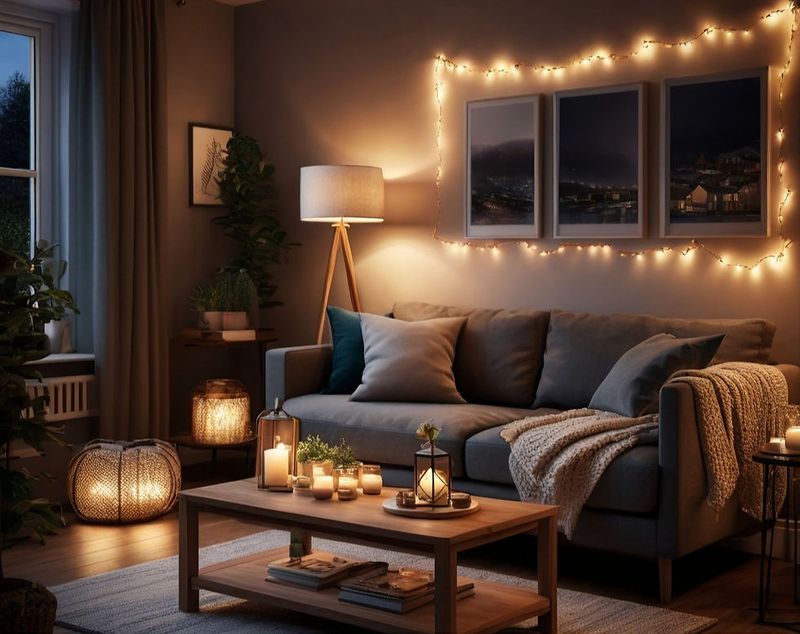
Great rooms need three types of lighting working together. Overhead fixtures provide general illumination, but alone they create flat, unflattering spaces. Task lighting like reading lamps or under-cabinet lights helps with specific activities without straining your eyes.
Accent lighting adds the magic! Table lamps, wall sconces, or picture lights highlight architectural features and create cozy corners. Dimmers on every light switch give you ultimate control over the mood.
Mix lighting heights throughout your room for balanced illumination. When all your light comes from the ceiling, shadows can make faces look tired and spaces feel uninviting. Warm-toned bulbs (2700-3000K) create the most flattering glow for living spaces and bedrooms.
4. Use Rugs to Define Spaces
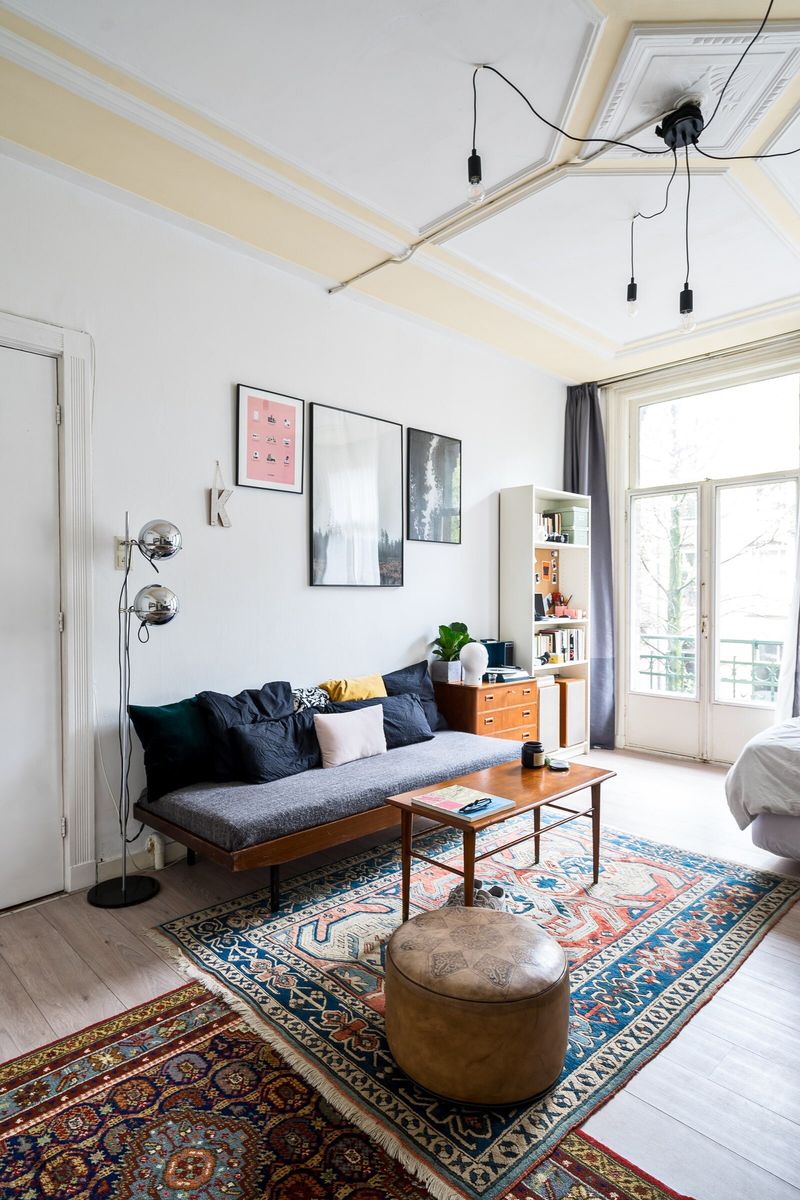
Rugs work like magic to create invisible walls in open floor plans. When your dining area bleeds into your living room, a well-placed rug under each grouping helps your brain understand where one space ends and another begins.
Size matters tremendously with rugs. Tiny rugs floating in the middle of a room create a postage stamp effect that makes spaces feel smaller and disconnected. For living rooms, choose rugs large enough for at least the front legs of all furniture to rest on them.
If you’ve fallen in love with a rug that’s too small, layer it over a larger, less expensive natural fiber rug like jute or sisal. This designer trick gives you the pattern you love while properly anchoring your furniture arrangement.
5. Create a Focal Point in Each Room
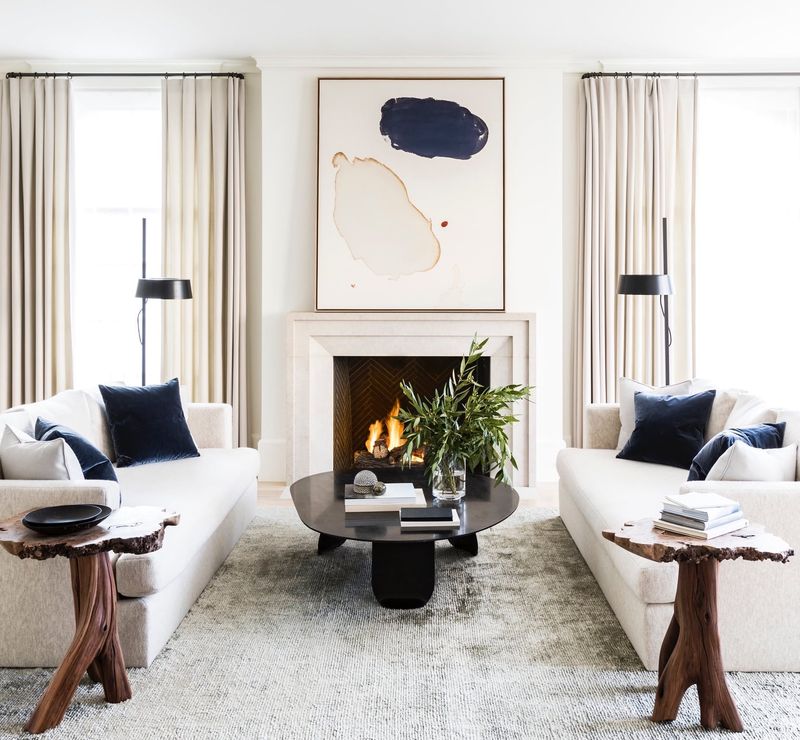
Every room needs something special that draws your eye when you first enter. Without a focal point, spaces feel boring and your gaze wanders aimlessly. Fireplaces, large windows, or architectural details make natural focal points you can enhance with décor.
When natural focal points don’t exist, create your own! A bold piece of artwork, a dramatic headboard, or a statement piece of furniture can anchor a room beautifully. Whatever you choose, make it slightly larger or more dramatic than other elements in the space.
Arrange furniture to face or acknowledge your focal point. This gives the room purpose and direction. In bedrooms, the bed typically serves as the focal point, while living rooms might highlight a fireplace or entertainment center. Just avoid competing focal points that create visual confusion.
6. Mix Textures for Depth

Flat rooms bore the eye, even when colors and patterns are perfect. My secret weapon? Texture mixing! Combining smooth, rough, shiny, matte, soft, and hard surfaces creates visual interest that makes spaces feel thoughtfully designed rather than catalog-ordered.
Try pairing a sleek leather sofa with a chunky knit throw and natural wood tables. Add metallic accents through picture frames or lamp bases. Introduce plant life for organic texture that softens hard edges and brings rooms to life.
Textural contrast works especially well in monochromatic rooms. When everything shares a similar color, different textures prevent the space from feeling flat or boring. Velvet pillows against linen upholstery or a glossy ceramic vase atop a rough wooden table creates sophisticated depth without requiring bold color statements.
7. Choose Neutral Foundations
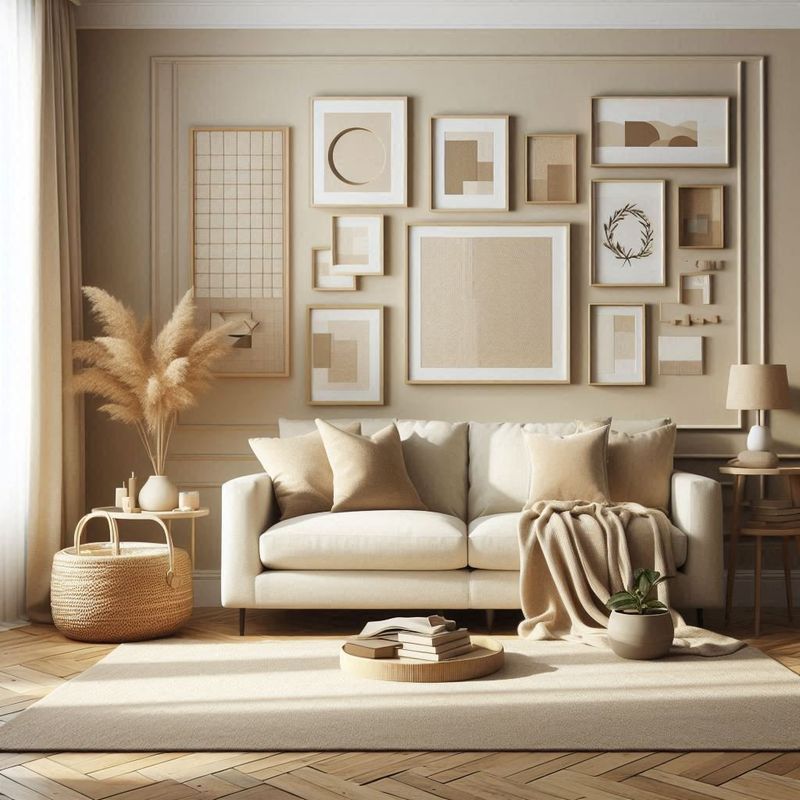
Big-ticket items deserve timeless treatment. Sofas, beds, and other furniture investments should wear neutral colors that won’t look dated next year. Think beiges, grays, taupes, and other versatile hues that play well with changing trends.
Pattern mixing becomes infinitely easier with neutral foundations. When your largest pieces stay subtle, you can swap pillows, throws, and accessories seasonally without breaking the bank. White kitchen cabinets have remained popular for decades precisely because they adapt to evolving styles.
Worried about boring spaces? Neutrals don’t mean bland! Incorporate interesting shapes, textures, and subtle variations within your neutral palette. A greige sofa with nailhead trim or a cream bed with a tufted headboard offers visual interest while maintaining versatility. Save bold colors and patterns for items you can easily replace.
8. Add Pops of Color Through Accessories
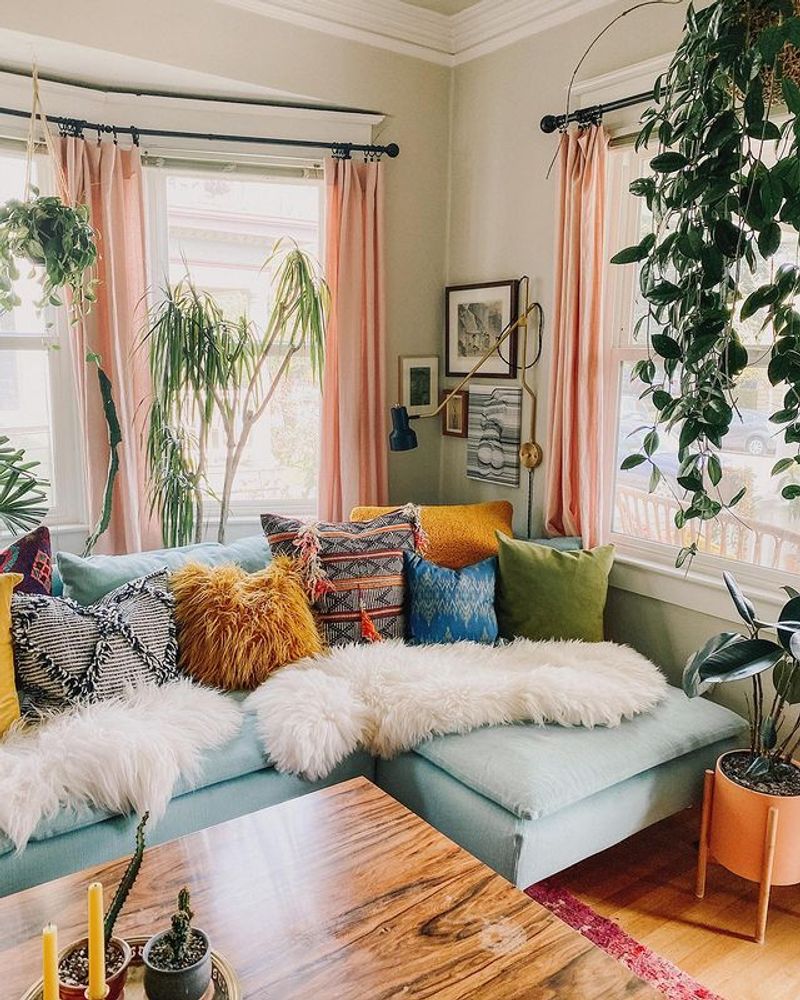
Color commitment issues? You’re not alone! Instead of painting walls bright orange or buying a purple sofa, introduce bold colors through easily changeable accessories. Pillows, throws, vases, and artwork let you experiment without long-term commitment.
Seasonal color changes become simple with this approach. Swap out coral and turquoise accessories in summer for deep burgundies and forest greens in winter. This flexibility keeps spaces feeling fresh without complete renovations.
When selecting accent colors, pull inspiration from artwork or textiles you already love. If a painting contains hints of mustard yellow, incorporate that shade through small accessories throughout the room. This creates a cohesive look that feels intentional rather than random. Remember that even neutrals like black, white, and metallics can serve as powerful accent “colors” in the right context.
9. Vary Heights in Décor Arrangements
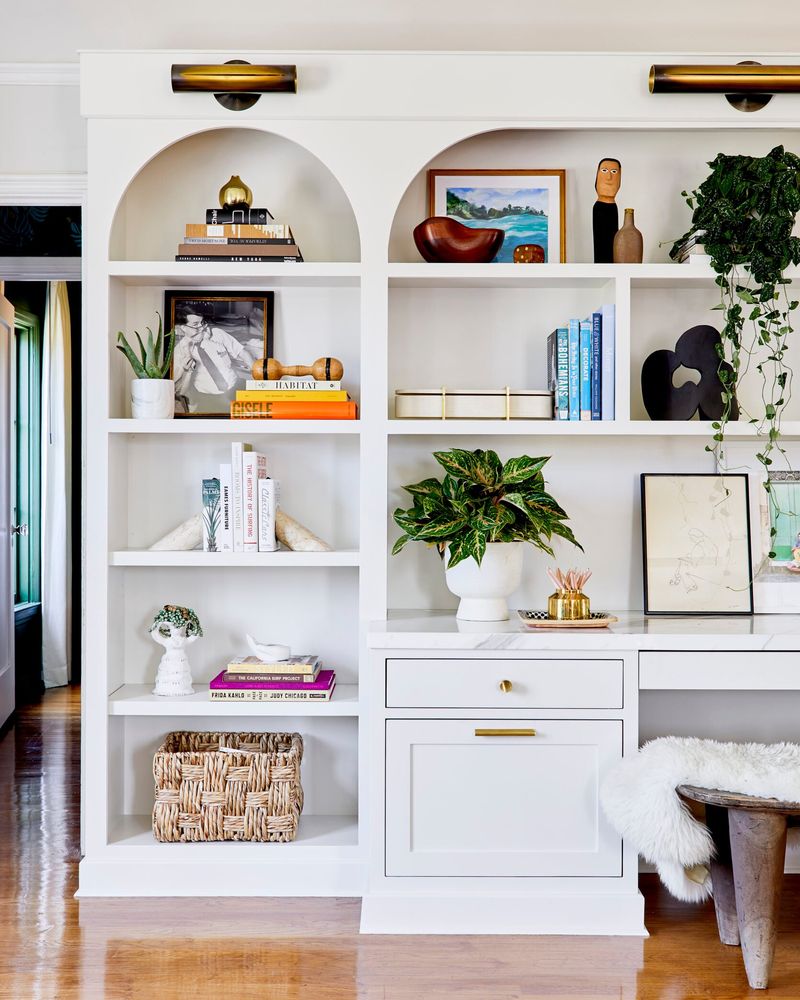
Flat tabletop displays look amateurish and uninteresting. Professional decorators know that varying heights creates visual excitement and draws the eye around a space. When styling shelves, mantels, or tabletops, combine tall, medium, and short elements.
Books make perfect height-boosting platforms. Stack them horizontally to elevate smaller objects to different levels. Group items in odd numbers (typically threes or fives) for a balanced yet dynamic arrangement that feels intentional rather than cluttered.
Height variation applies to furniture arrangements too. Mix tall bookcases with medium-height chairs and low coffee tables. This creates a comfortable visual rhythm that prevents rooms from feeling top-heavy or bottom-heavy. Plants offer wonderful height options—from tall floor specimens to medium tabletop varieties and tiny succulents—adding natural dimension to any space.
10. Display Art at Eye Level
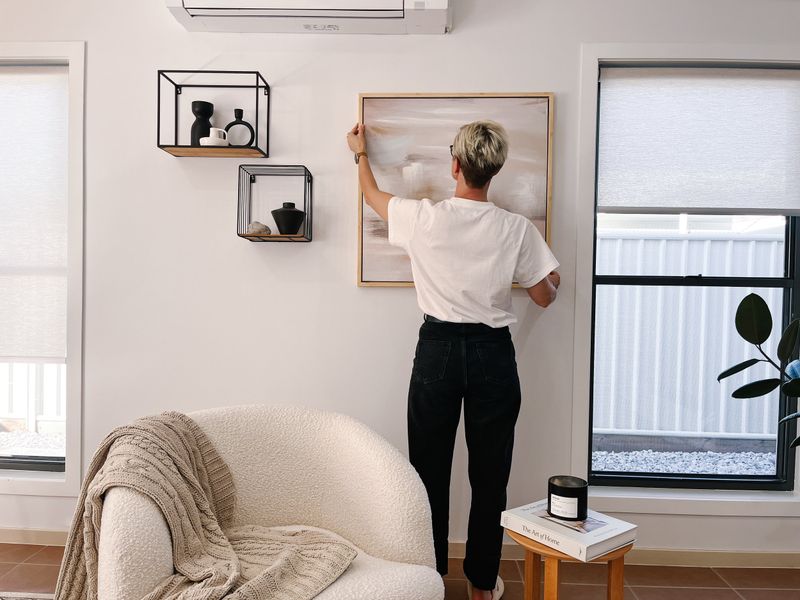
Art hung too high ranks among the most common decorating mistakes I see. Gallery-worthy hanging means positioning artwork so its center point sits approximately 57-60 inches from the floor—average eye level for most adults. This creates a comfortable viewing experience without neck strain.
When hanging art above furniture, different rules apply. Maintain 4-8 inches of space between the bottom of your frame and the top of your furniture. This creates a visual connection between the pieces while preventing awkward floating.
For gallery walls, treat the entire arrangement as a single unit with its collective center at eye level. Start by arranging frames on the floor, taking photos to remember your layout. Use painter’s tape on walls to mark boundaries before hanging. Small paper templates cut to match your frame sizes can be taped to walls for previewing placement without hammering multiple holes.
11. Edit Out Clutter Regularly
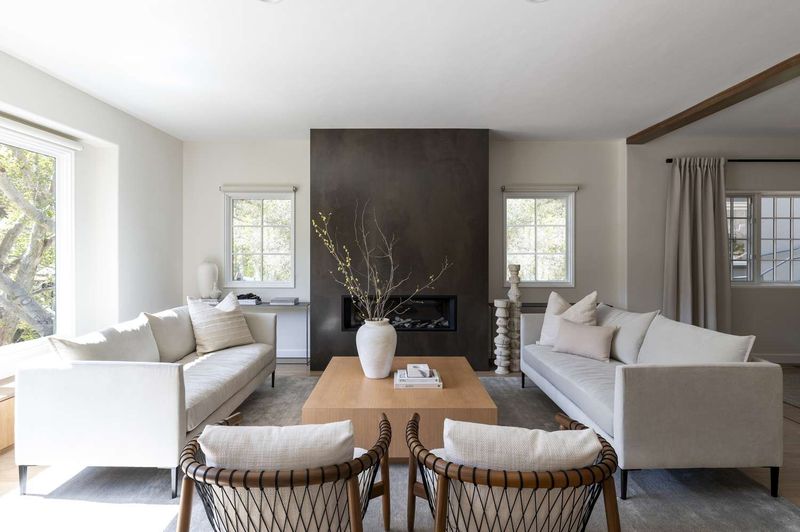
Less truly becomes more in well-designed spaces. I’ve learned that regular decluttering sessions maintain the intentional beauty of any room. Every few months, I remove everything from surfaces and only return items that serve a purpose or bring genuine joy.
Decorative objects look more purposeful when given breathing room. Rather than displaying twenty small trinkets, choose five meaningful pieces that can command attention. Group related items together rather than scattering similar objects throughout a room.
Hidden storage solutions preserve necessary but unattractive items. Decorative boxes, baskets, and furniture with concealed compartments keep remote controls, chargers, and everyday clutter contained but accessible. Remember that negative space areas intentionally left empty creates visual rest that makes the items you do display look more special and deliberate.
12. Incorporate Greenery for Freshness
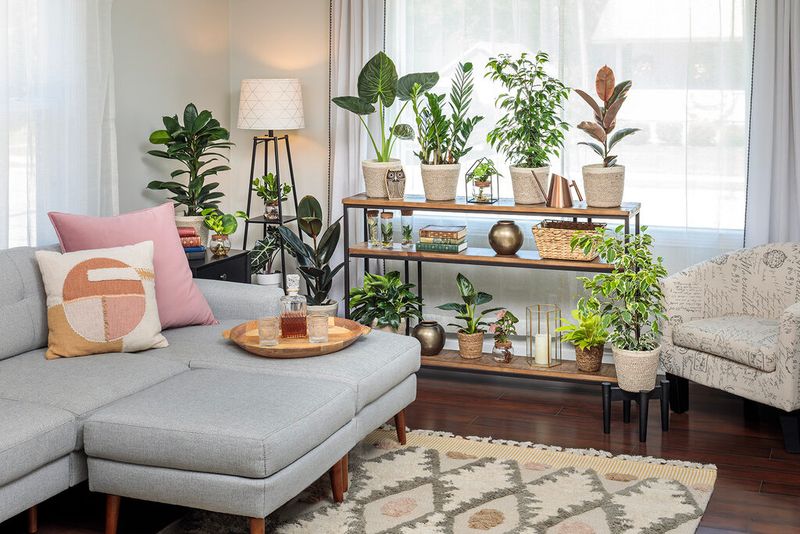
Plants breathe life into spaces like nothing else can. Even design-challenged rooms instantly improve with the addition of greenery. If you’ve killed every plant you’ve owned, try nearly indestructible varieties like snake plants, pothos, or ZZ plants that thrive on neglect.
Faux plants have come incredibly far in recent years. High-quality artificial options can fool even discerning eyes while requiring zero maintenance. Mix real easy-care plants with premium faux specimens for the best of both worlds.
Beyond traditional potted plants, consider fresh flowers, branches, or even vegetables as natural décor. A bowl of lemons or artichokes makes a beautiful, inexpensive centerpiece. Clipped branches from your yard arranged in a tall vase create dramatic height. Even humble grocery store flowers divided into several small arrangements can spread natural beauty throughout your home.
13. Personalize Spaces with Meaningful Items
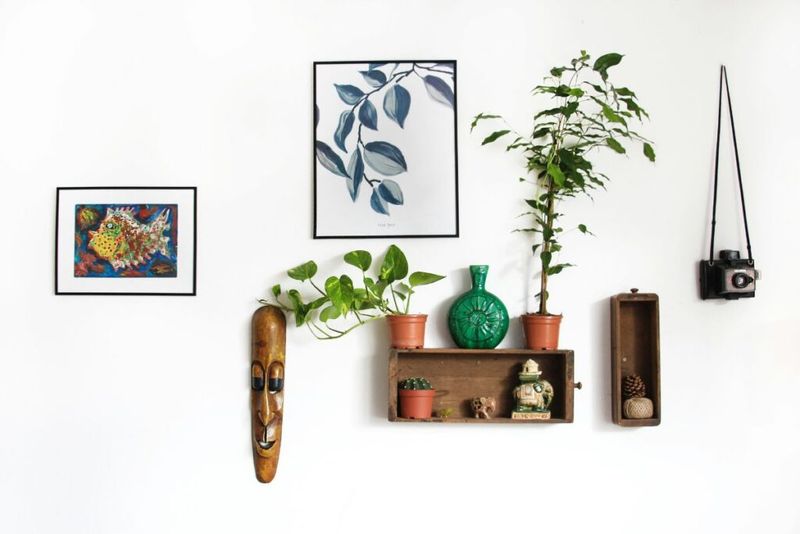
Houses become homes when they tell your unique story. Incorporating personal elements prevents spaces from feeling like sterile hotel rooms. Display travel souvenirs, family heirlooms, or hobby-related items that spark conversation and reflect your experiences.
Family photos deserve thoughtful presentation. Rather than scattering mismatched frames throughout your home, create cohesive gallery displays using consistent frame styles or color schemes. Black and white printing unifies photos from different eras and color palettes.
Children’s artwork gains sophistication when properly framed. Select your child’s best pieces and display them in simple frames alongside your other art. This elevates their creations while honoring their creativity. Books also tell your story—display titles that reflect your interests rather than purely decorative volumes. These personal touches create authentic spaces that comfort and inspire you daily.
14. Balance Old and New Pieces
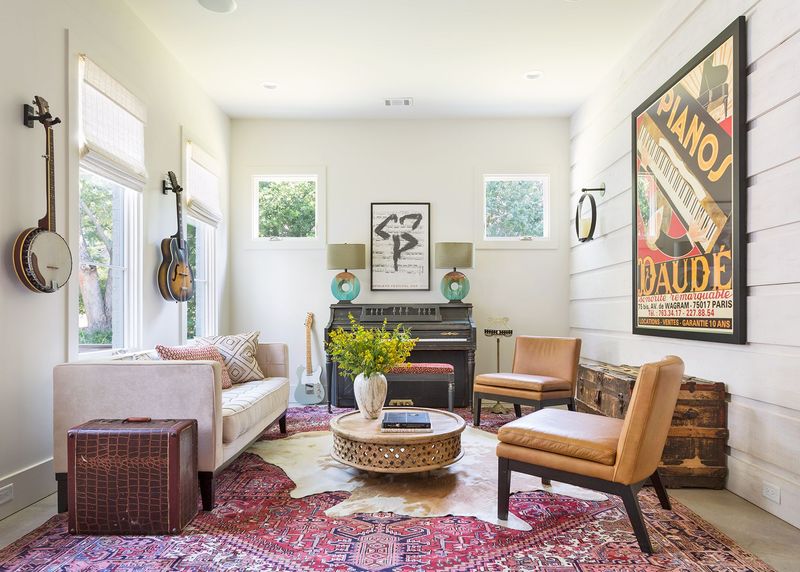
Rooms filled entirely with new furniture often lack soul and character. Adding vintage or antique pieces creates instant depth and prevents spaces from feeling like showrooms. Even modern-leaning rooms benefit from one or two items with history and patina.
Thrift stores, estate sales, and family hand-me-downs offer budget-friendly character pieces. An old wooden chest might serve as your coffee table, while vintage brass candlesticks add warmth to contemporary shelving. These older elements ground spaces with their uniqueness and craftsmanship.
When mixing styles, look for connecting elements. Perhaps your antique dining table and modern chairs share similar wood tones, or your contemporary sofa and vintage side tables feature complementary lines. Reupholstering old furniture with updated fabrics creates perfect transition pieces that bridge different styles and eras while preserving character-rich frames.
15. Group Objects in Odd Numbers
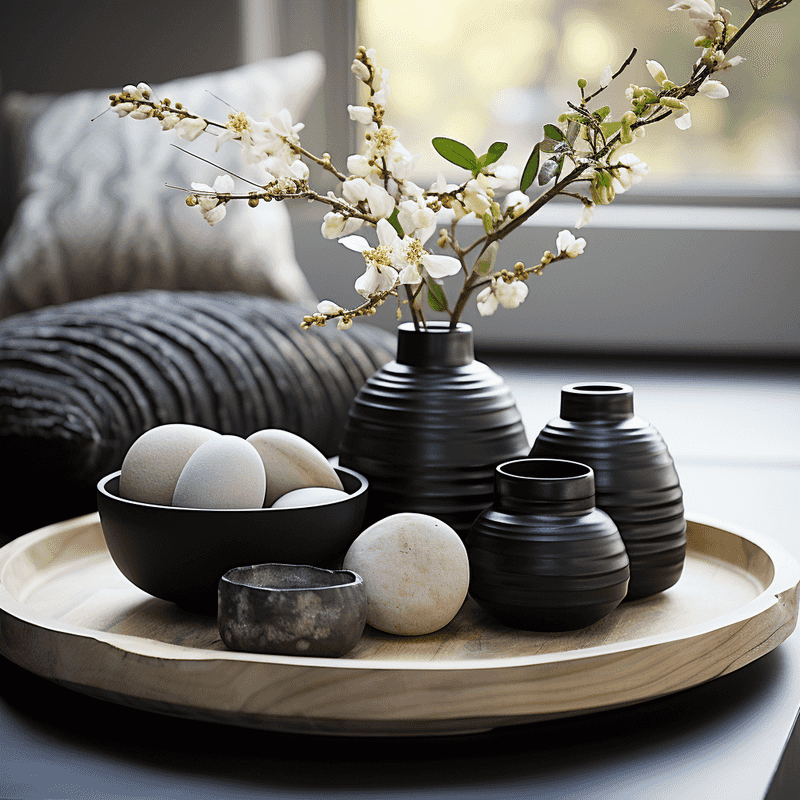
Odd-numbered groupings create visual interest that even numbers can’t match. Sets of three, five, or seven items form asymmetrical arrangements that feel dynamic rather than static. This principle applies to everything from candles on a mantel to throw pillows on a sofa.
Height variation within groups creates natural visual triangles that guide the eye. Place your tallest object slightly off-center, with medium and shorter items flanking it. This creates movement and prevents the static, lined-up feeling that even-numbered groupings often produce.
When grouping objects, look for connections through color, material, or theme while maintaining some differences. Three identical candlesticks create less interest than three different candlesticks sharing a similar finish or color. The balance between similarity and variety keeps arrangements cohesive yet intriguing. This odd-number rule is one professional stylists use consistently to create magazine-worthy vignettes.
16. Consider Sight Lines Between Rooms
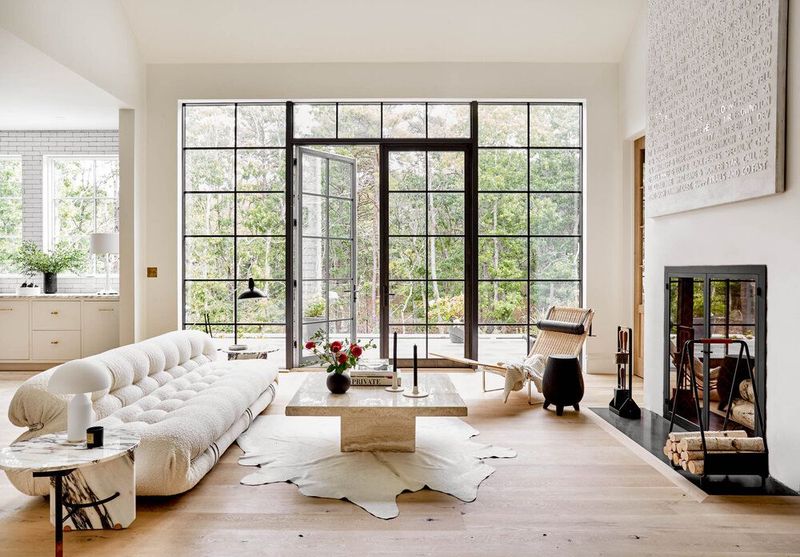
First impressions matter in home design. Stand at your front door and notice what catches your eye first—this view deserves special attention. Similarly, doorways between rooms create frames that highlight whatever sits in their direct line of sight.
Color continuity between adjoining spaces creates flow without requiring matching décor. If your living room walls feature sage green, incorporate small touches of that same green in neighboring rooms through pillows, artwork, or accessories. This subtle connection helps spaces feel related without being identical.
Furniture placement should consider movement patterns between rooms. Avoid positioning large pieces that block natural pathways or create awkward traffic jams. When possible, arrange seating to take advantage of pleasing views into adjacent spaces. These thoughtful sight line considerations elevate your home’s overall design by creating intentional visual moments as you move through the space.
17. Use Mirrors to Reflect Light
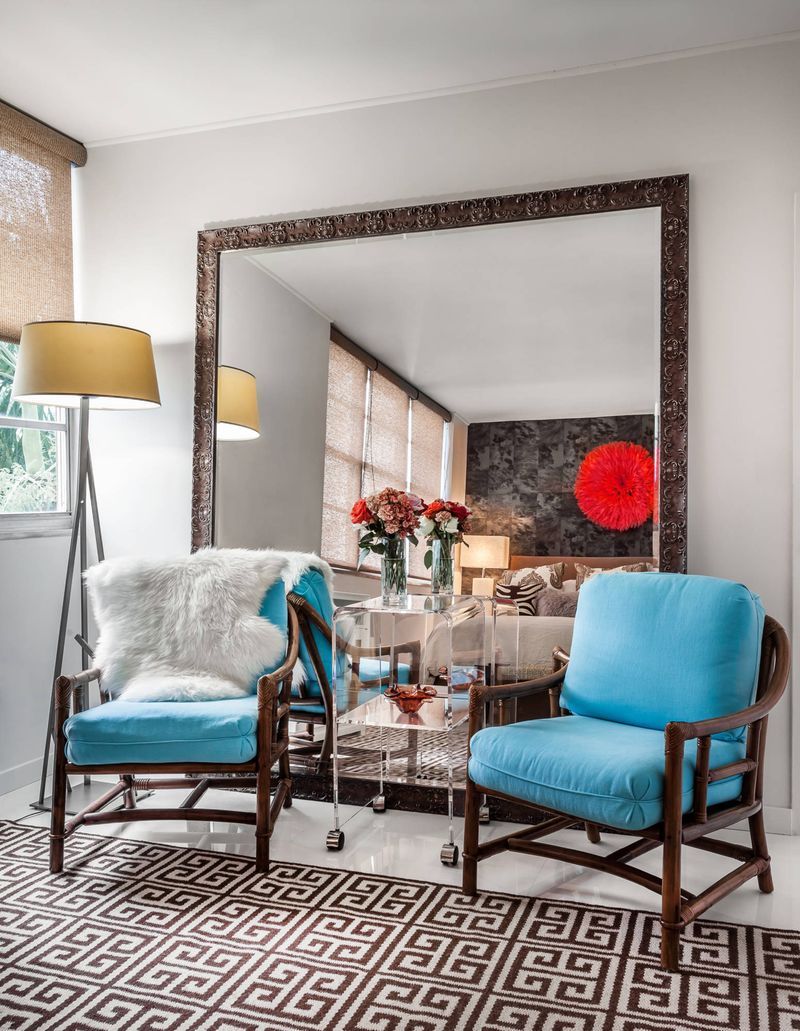
Mirrors perform decorating magic in any space. Beyond their practical function, they bounce light around rooms, making dark corners brighter and small spaces feel larger. Position mirrors across from windows to maximize natural light reflection throughout the day.
Shape matters when selecting mirrors. Round or oval mirrors soften rooms with many angular elements, while rectangular or square mirrors complement spaces with more curved furniture. Oversized mirrors create dramatic impact and can serve as focal points in their own right.
Decorative frames transform mirrors into statement pieces. Vintage gold frames add warmth and character, while sleek frameless mirrors suit contemporary spaces. Grouping several smaller mirrors creates an artistic installation with more visual interest than a single large mirror. For maximum light reflection, choose mirrors with clear rather than tinted glass.
18. Test Paint Colors on Large Swatches
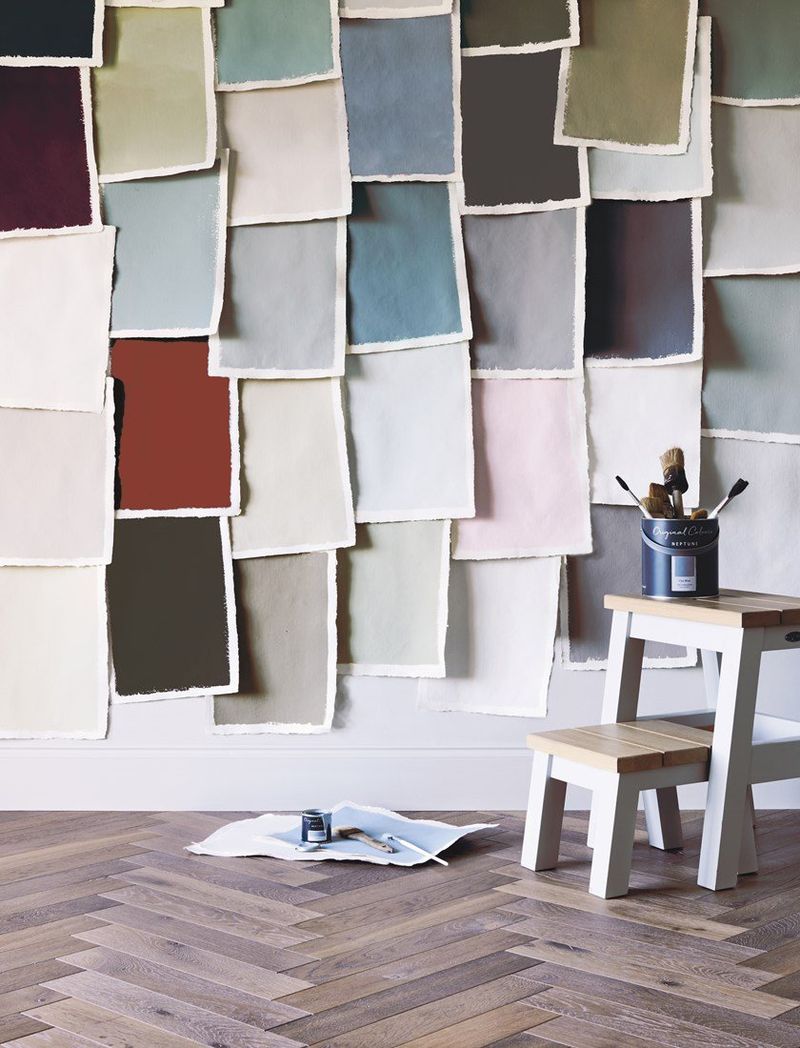
Tiny paint chips lie about how colors will look on your walls. What appears perfect in the store often surprises (and disappoints) when covering an entire room. Smart decorators always test colors properly before committing.
Purchase sample pots and paint large swatches—at least 2 feet square—on multiple walls. Colors look dramatically different depending on light exposure, so check your samples throughout the day and evening. Many paint stores now offer large peel-and-stick samples that eliminate the need for painting test patches directly on walls.
White paints prove especially tricky, as undertones become more apparent at scale. What looks like pure white on a chip might reveal itself as cream, pink, or blue-tinted when painted across a wall. Testing multiple options simultaneously helps you see these subtle differences. Remember that existing furnishings, flooring, and even landscaping visible through windows will affect how paint colors appear in your specific space.
19. Layer Textiles for Comfort
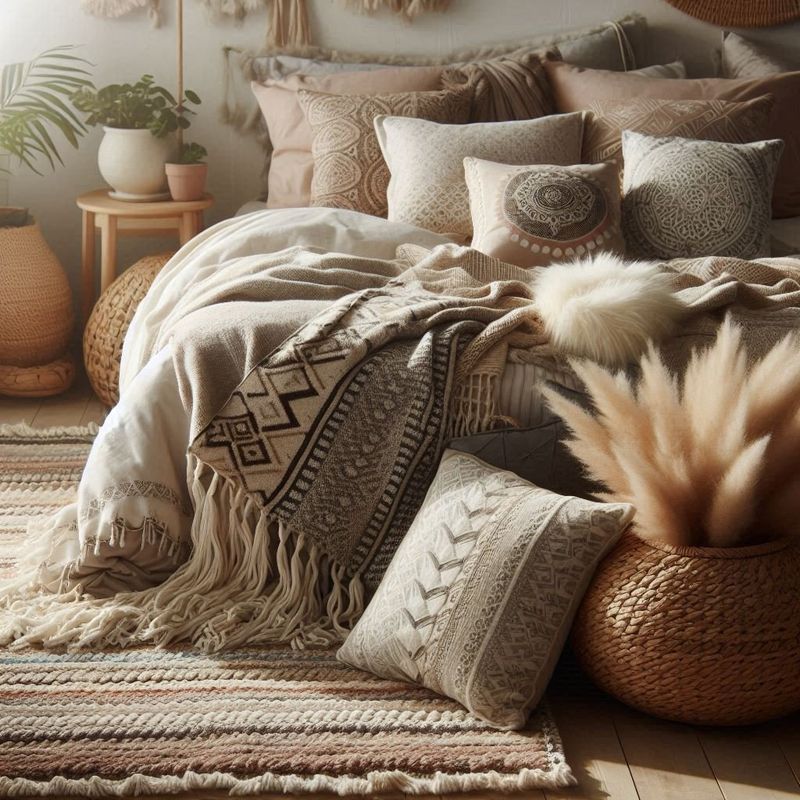
Cozy, inviting rooms never feature just one textile. Layering different fabrics creates depth, dimension, and undeniable comfort. Start with substantial base textiles like upholstery, rugs, and curtains in complementary colors and patterns.
Add middle-layer textiles through throw pillows and blankets that introduce new textures and patterns while maintaining your color story. Mixing patterns works beautifully when you vary their scale pair large florals with medium stripes and small geometric prints while keeping some color consistency between them.
Finish with accent textiles like table runners, ottomans, or fabric-covered boxes that repeat elements from your other layers. These thoughtful textile combinations make rooms feel complete and considered. During warmer months, simply remove heavier layers while maintaining the foundation pieces. This creates seasonal variety without complete redecoration.

